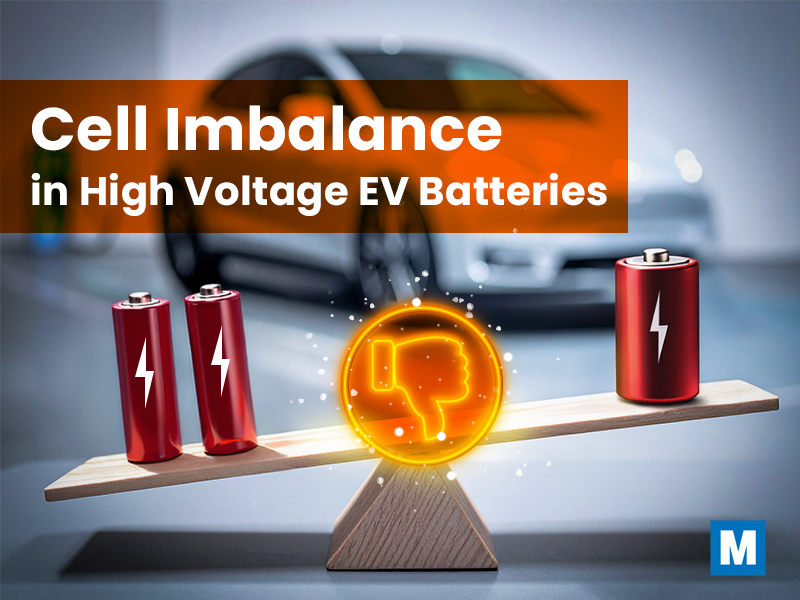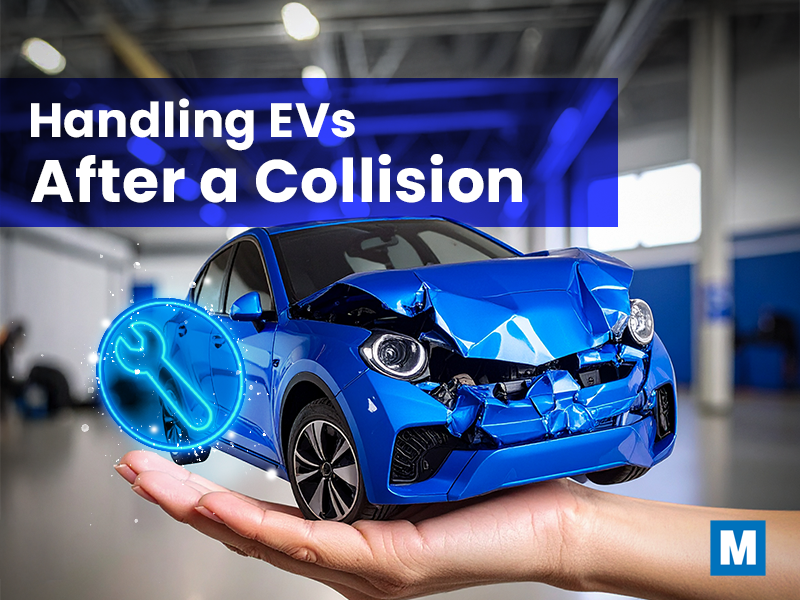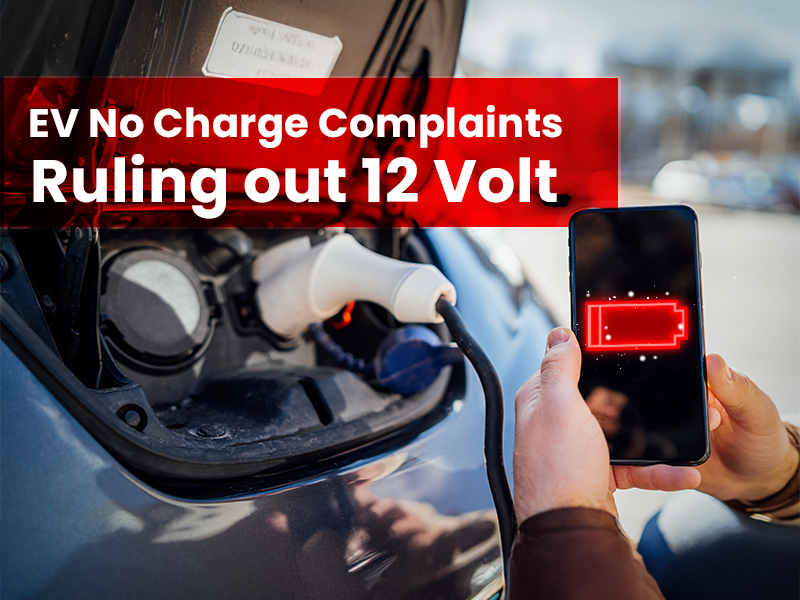Cell imbalance in a high-voltage (HV) battery pack might not throw a red flag right away, but it’s often the canary in the coal mine for long-term health issues. Left unchecked, imbalanced cells can cause reduced range, premature battery degradation, charging issues, and in worst cases, thermal events. For service departments at both franchised dealerships and independent EV-certified shops, spotting early signs of imbalance can help avoid serious problems down the road.
As more EVs show up in the service bay, both in and out of warranty, it’s becoming increasingly important to decipher the signs that a pack may be drifting out of spec. Learn the early warning signs, considerations for diag, and strategies to address cell imbalance before it compromises the entire pack.
First, What Is Cell Imbalance?
An EV battery pack is made up of hundreds or thousands of individual lithium-ion cells, arranged in modules and managed by a battery management system (BMS). In a healthy pack, all cells should charge and discharge at roughly the same voltage level. But over time, variances in manufacturing, temperature differences, use patterns, or internal degradation can cause some cells to lose capacity or charge unevenly.
When that happens, you get cell imbalance: one or more cells operating at a different state of charge (SOC) than the rest. The BMS works hard to keep them balanced, typically using passive or active balancing strategies, but even the best BMS can only compensate so much. If imbalance progresses, the system could reduce charging capacity, limit performance, or trigger diagnostic trouble codes.
Early Warning Signs of Cell Imbalance
You won’t always see a Check Engine light or HV system warning until the issue is advanced. That’s why it’s important for shop staff, especially diagnostic technicians and service advisors, to recognize more subtle indicators.
1. Reduced Charging Efficiency
One of the first symptoms of cell imbalance is irregular charging behavior. The vehicle may charge slower than normal, quit the charge early, or struggle to reach 100% even when the charger and ambient temperature are ideal. This happens because the BMS cuts off charging when the highest-voltage cell reaches its maximum safe threshold, even if the rest of the pack is still below full.
2. Unexpected Range Loss
Range estimates becoming less accurate, or an EV losing 10 to 20% of expected range under normal driving conditions, can suggest some cells are underperforming. Drivers might report that the vehicle won’t go as far on a full charge as it did a few months ago. If tires and alignment are good and no parasitic drains are found, cell imbalance could be the underlying cause.
3. Erratic SOC or Voltage Readings
During diagnostics without DTCs, looking at cell-level data can reveal imbalance. A healthy pack may have cells within 10 to 20 millivolts of each other. If you’re seeing one or more cells that deviate by 50 to 100 millivolts or more from the group, especially under load or at rest after a charge cycle, that’s a red flag.
4. Cooling System Overactivity
The thermal management system (TMS) may start working harder to compensate for imbalanced cells heating up during charge or discharge. If the cooling fans or liquid cooling system seem to be engaging more often or staying on longer after shutdown, it could be related to weak cells generating more heat under stress.
5. Charge Rate Limiting or Slow Fast-Charge Sessions
Fast-charging performance relies on all cells accepting current equally. If a few cells are lagging or hitting voltage limits early, the BMS will slow down the entire process. A customer might complain that their vehicle used to fast-charge in 35 minutes and now takes nearly an hour, even at the same station. That’s not always the charger – it could be the pack with signs of imbalance.
Test Equipment to Spot the Signs
Most OEMs don’t allow pack disassembly in the field, so the only way to catch these issues early is with robust diagnostic tools that can read individual cell or module voltages. Midtronics diagnostic equipment like the GRX EV battery service tool can help you identify imbalance in:
- Voltage distribution across cells
- State of charge deviation
- Module-level temperature differences
- Charge acceptance curve changes
Pair these tools with scan data from the vehicle’s BMS, especially if it provides logs of previous charging cycles or performance data.
Scenario: Real-World Use Case
A 2021 long-range EV arrives for a routine service. The customer notes that the vehicle charges slower than it used to and estimates their range has dropped from 300 miles to 250. No MIL or HV fault codes are present. tThe technician notes a 90-millivolt delta between the lowest and highest cells during a diagnostic discharge cycle, and one module running slightly hotter than the others.
Because the pack is still functional, the advisor communicates that imbalance is developing and recommends documentation for a warranty claim or pack health monitoring with periodic checks. The customer appreciates the proactive service and books a follow-up.
Managing Cell Imbalance Without Pack Replacement
While severe imbalance often leads to full pack replacement, some OEMs support module-level service or allow balancing protocols to be run. When applicable, these options may be available:
- Reconditioning via BMS software to re-balance cells
- Module replacement if allowed by the manufacturer
- Battery warranty claim if cell degradation falls below the threshold
- Customer education about limiting extreme charging behavior, like constant fast-charging or frequent full discharges
Even if replacement isn’t required immediately, documenting imbalance is vital. Keep printouts or data logs from each test so you can demonstrate the trends if the customer returns later.
Communicate with the Customer
Service advisors and shop managers should be prepared to translate technical data into customer-friendly language. Avoid jargon like “voltage differential” and instead say things like:
“A few cells inside your battery pack are charging differently than the rest. That can reduce range and slow down charging. Right now, it’s manageable, but we’re tracking it so you don’t get surprised down the road.”
If the vehicle is under warranty, this may be a golden opportunity to initiate a repair while coverage is still active. If it’s out of warranty, explain that you’re monitoring the pack to help them avoid unexpected costs later.
Detect Early, Act Wisely
Cell imbalance in EVs won’t always scream for attention. Often, it starts quietly like subtle differences in charge time, range, or thermal behavior. But for service departments, recognizing these signs can help avoid premature pack failure, protect customers from surprises, and build confidence in EV service capabilities.
Invest in the right diagnostic tools from Midtronics, and train your team to read the early signs, giving your shop the edge, especially as EVs become a bigger part of your business.




